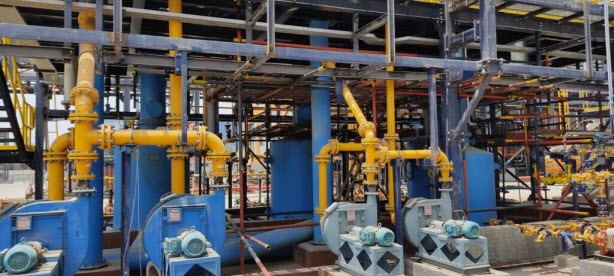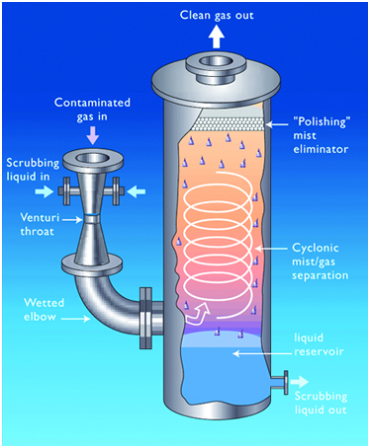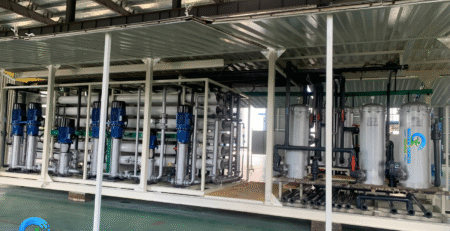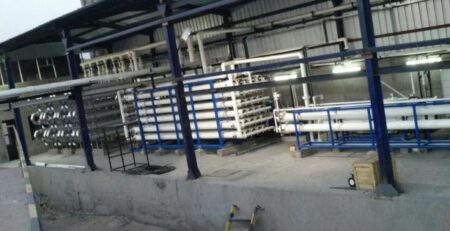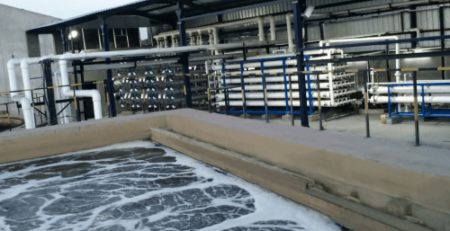Cost-Effective Design of Venturi Scrubber System for Air Pollution Control
Venturi scrubbers are a good option for applications with high temperatures, heavy contaminant loads and corrosive conditions. They operate without a system fan and use liquid spray for entrainment.
The amount of liquid injected into the throat area affects particle collection efficiency. Higher liquid flow rates increase the efficiency of the scrubbing system.
Cost-Effective Design of Venturi Scrubber
Wet air pollution control technologies, like the venturi scrubber system, typically remove air pollutants at high efficiencies, up to 99 percent for particles of 3 um aerodynamic diameter or smaller, according to Pollution Engineering. Venturi scrubbers achieve these efficiencies by forcing contact between a fine mist of water droplets and the polluted gas stream.
This contact is forced through a tight space, such as the throat section of the venturi scrubber constriction, at high velocity. When the cleaning liquid reaches this throat section, it becomes atomized into an enormous number of tiny droplets, creating turbulent mixing between the gas and the water phase. The polluted gas and the water droplets then combine in the diverging section of the throat and are forced to slow down, allowing for particle removal.
Venturi-type scrubbers have several advantages over other wet scrubbing systems. In addition to offering a cost-effective design, they have the added advantage of being easy to install and operate. The system typically requires a single, high-pressure spray nozzle that’s aimed at the throat section of a venturi constriction. The nozzle produces a spray at higher injection rates and higher pressures than those used in a traditional spray tower, but with a reduced amount of liquid being injected per minute.
While simple venturi scrubbers have fixed throat areas, an adjustable-throat version is often used to maintain efficiency over a wider range of flow rates. Adjustable-throat venturis allow the throat area to be changed by moving a plunger up or down, which decreases or increases the annular opening of the throat section and creates more or less turbulence.
A venturi scrubber can handle a variety of temperatures and pollutants, including fly ash and sulfur dioxide. It is especially useful in treating hot, dry inlet gases with abrasive or corrosive particles. For example, it has been used to treat kiln and furnace gases in the cement industry, as well as gas and odor emissions at coco roasting plants located in Ozone Non-Attainment zones. A venturi scrubber can also reduce the noxious fumes produced by some chemical processing, such as oxidizing volatile organic compounds with hydrogen peroxide.
Low Pressure Drop
Venturi scrubbers are one of the only wet scrubber types that remove both gases and particulate matter in a single process. They use the energy of a high-velocity inlet gas stream to atomize liquid and shear it into an enormous number of small droplets that can impact the dust particles and capture them. The resulting mixture of polluted gas and scrubbing liquid is discharged from the scrubber through a separator and can be disposed of in an open pit or wet well.
As with other wet scrubbing systems, Venturi scrubbers must be designed for the specific needs of your application. The low pressure drop of a Venturi scrubbing system means that it can be easily adapted to many types of process equipment. The low capital and operational costs of the system also make it an economical choice.
The basic design of a Venturi scrubber is an inverted cone with a throat section that opens into the converging section. A large liquid flow rate injected above the throat section can coat the inside of the throat with a wet wall or wet throat, which prevents solids from building up and reduces mechanical abrasion on abrasive or hot inlet gases.
However, a simple venturi is not able to maintain this efficiency over a wide range of gas flow rates. To solve this problem, manufacturers have developed various modifications that allow the throat area to be adjusted for varying inlet gas flows. One such modification is the adjustable throat venturi, which uses a movable plate that can be closed to adjust the throat cross-sectional area for a given turndown range.
Another important factor in the performance of a Venturi scrubber is the liquid-injection rate, which is referred to as the Liquid-to-Gas Ratio (L/G). Proper L/G ratios are necessary to ensure adequate liquid coverage over the throat area to achieve high particle collection efficiencies. When the L/G ratio is too low, the gas stream will collide with the walls of the throat section and evaporate. This can lead to reduced scrubbing effectiveness and increased maintenance expenses.
High Liquid-to-Gas Ratio
In a Venturi scrubber system, scrubbing liquid is introduced through a nozzle or orifice into a gas stream that contains particulate matter (PM). The scrubbing liquid creates droplets that entrain and capture dust particles by agglomeration, adhesion, or encapsulation. At the same time, the scrubbing liquid simultaneously absorbs and neutralizes gaseous pollutants. The scrubbing liquid is then suspended in a mist collector and recovered for reuse in the scrubber process.
The primary atomization of the scrubbing liquid occurs in the throat section of the venturi constriction, thereby providing one of the highest collection efficiencies of any wet scrubbing system. This enables the Venturi to achieve high relative velocities for the liquid and particle streams.
A simple venturi will operate efficiently only over a very small range of gas flow rates, but an adjustable-throat venturi can maintain efficiency over a wide range of flows by simply changing the size of the throat area. The throat area can be varied by moving a plunger or adjustable disk up or down in the annular orifice, decreasing or increasing the throat size.
Like spray towers, Venturis require an entrainment separator to remove heavy wetted particulate from the outlet clean gas stream and return it to the scrubbing water supply. The entrainment separator is typically a cyclone, mesh-pad or blade type and must be constructed of wear-resistant materials due to the high gas velocities encountered within the venturi.
Venturis are particularly effective for removing coarse-grained PM, but they tend to lose effectiveness for very fine PM due to the high liquid carryover rate and the difficulty in achieving optimum relative velocities between the liquid and particle streams. One way to improve collection efficiency for very fine PM is to use an ejector venturi, which uses a single high-pressure spray nozzle instead of many nozzles. This nozzle operates at much higher injection rates and pressures than spray tower nozzles, making the entrainment separator even more critical for these units.
The most important factors affecting collection efficiency in a venturi scrubber are the scrubbing liquid injection rate, the relative velocities of the particle and scrubbing liquid streams, and the throat area and liquid-to-gas ratio. Using isokinetic sampling equipment, Monroe Environmental performed a series of tests to determine the best combination of these variables for collecting very fine PM from biomass combustion. The optimum conditions were achieved when the Venturi scrubber operated at Vth = 137 m/s, resulting in very high collection efficiencies of 98% for diameters up to 2.5 mm.
Wet Throat
Venturi scrubbers provide a relatively low price point and high removal efficiency making them a great option for many applications. However, they require a high amount of power to accommodate their large pressure drop and shear the scrubbing liquid into fine drops. This type of scrubber is generally used to remove odorous and toxic gases or particulate from industrial exhaust streams.
The design of a venturi scrubber is comprised of three sections: a converging section, a throat section, and a diverging section. When the inlet gas stream enters the converging section, its area decreases while its velocity increases. This acceleration and shear forces the scrubbing liquid to break into tiny droplets in accordance with Bernoulli’s Law. The gas stream then mixes with the fog of droplets in the throat section, which causes both the gas and the particles to be removed from the exhaust. The discharged fumes then exit through the diverging section at a much lower velocity than inlet gas.
To reduce the abrasion and plugging of the throat, most venturis are wetted using spray nozzles that inject scrubbing liquid before or during the inlet gas flow through the throat. In some systems, the liquid is also injected directly into the gas stream and atomized by the shear action of the turbulence at the throat walls. This method of scrubbing is typically used for smaller particle sizes as it allows for the use of higher nozzle and liquid-to-gas ratios which, in turn, improve particle collection efficiencies.
Another type of wet scrubber for air pollution control is a multi-stage venturi scrubber that uses a plurality of venturis arranged in a series to create a duct effect between each of the individual units. This configuration provides higher L/G ratios than conventional venturi scrubbers for improved efficiencies while providing a more compact system footprint. These types of scrubbing systems are usually used in combination with other scrubbing technologies such as packed beds to improve their overall performance. For more information about our extensive range of venturi scrubbers, contact us today. We can help you find the ideal system to meet your application needs.

